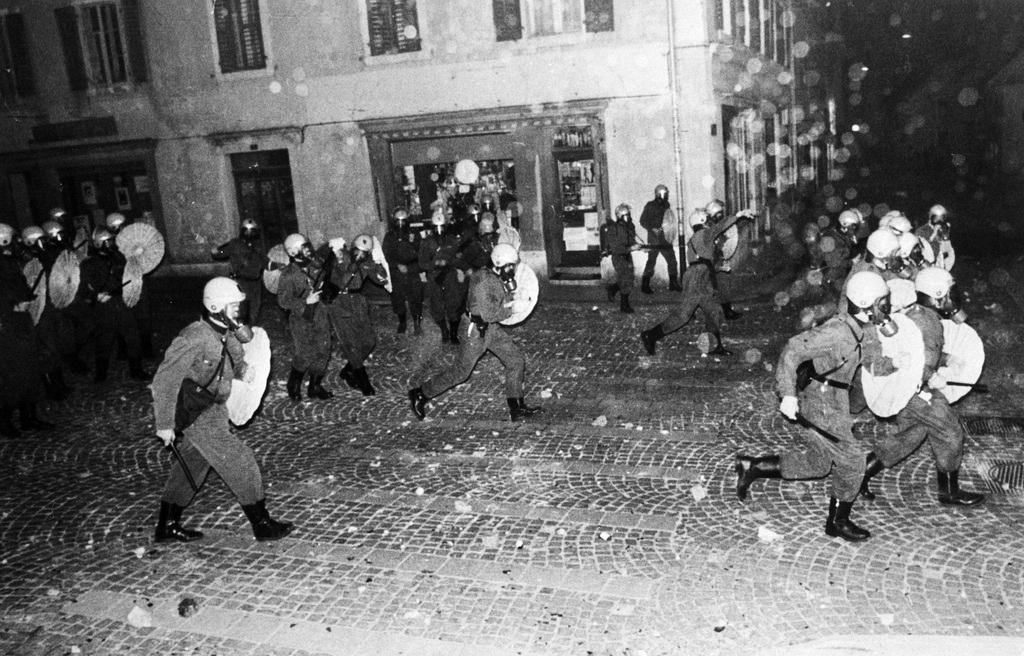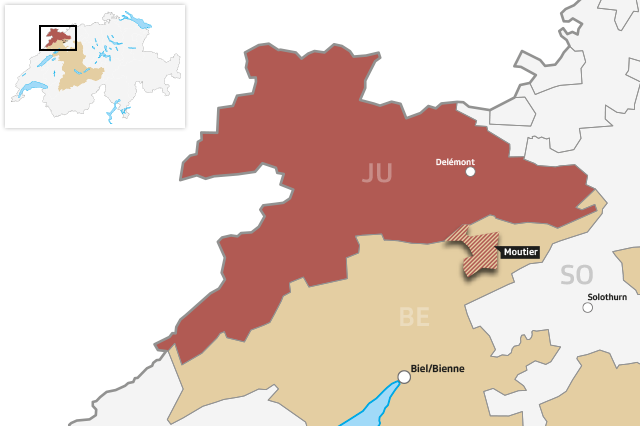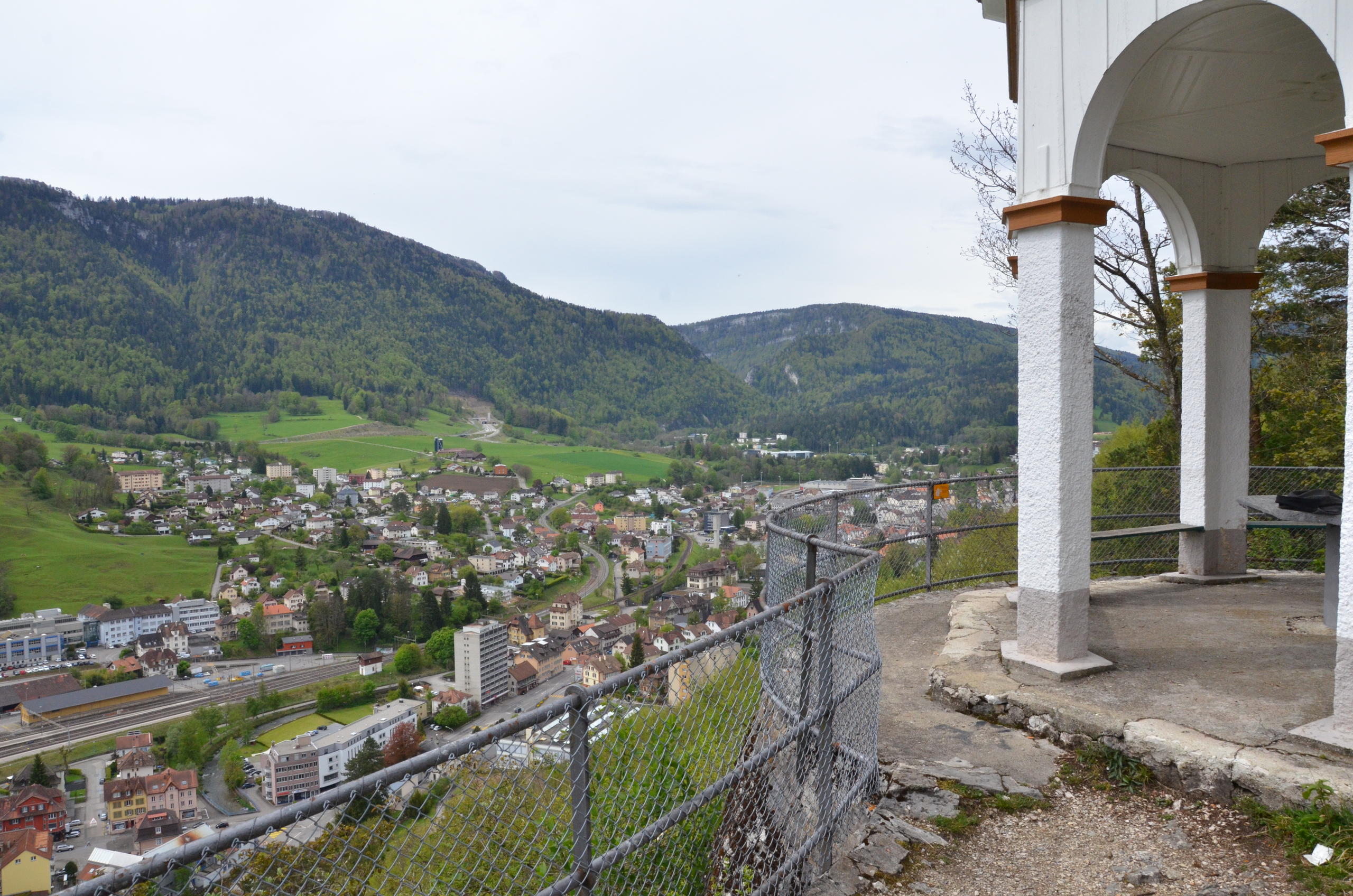Why the vote in the Swiss town of Moutier was historic

It may have been just a local ballot, but it marked a decisive stage in a long-term Swiss territorial conflict. Here’s why the town of Moutier’s June 18 vote to join canton Jura will go down in history.
In brief, democracy, citizens’ consultation and participation were able to solve a drawn-out conflict through mainly peaceful means.
Sunday’s decision by local voters means that the municipality of Moutier, a town of 7,000 residents in the Jura region, will be able to secede from canton Bern and join neighbouring canton Jura – more than 200 years after European powers redrew the map of Switzerland at the 1815 Vienna Congress.

More
Swiss town of Moutier votes to change cantons
Over the years, the creation of new borders and new cantons has had far-reaching consequences for many residents in this remote region of northwestern Switzerland.
The minority group of Catholic French-speakers long felt they were treated unfairly by the powerful Protestant and German-speaking majority in canton Bern.
Escalation
The simmering conflict escalated in 1947 when a French-speaking candidate failed to be elected to the Bern cantonal government.
Over the past seven decades, Jura separatists sometimes used force to argue for secession from Bern, notably through acts of vandalism and property damage in the 1960s. But compared with many other conflicts, including Northern Ireland or in Spain’s Basque Country or in Sri Lanka, it was possible to find common ground and agree to a path forward more quickly at the negotiating table.
A cascade of votes at the local, cantonal and national levels endorsed the decision to establish a new canton of Jura in 1978. This was followed by three more votes between 1989 and 2013 over whether parts of the Bernese Jura region should join another canton.
This article in part of #DearDemocracy, a platform on direct democracy issues from swissinfo.ch.
Moutier voted twice before it was able to determine its own fate last Sunday.
Two other small villages are due to decide later this year whether they want to follow the town of Moutier and join Jura. Once they do, the Jura conflict will have formally ended according to the plan laid out to resolve it.

More
All the ingredients for a Swiss civil war
Two centuries
1815: At the fall of Napoleon, the Congress of Vienna attributes the seven districts of the Jura to the canton of Bern.
1950s: The rise of the separatist movement seeking to leave canton Bern.
1974-75: The Jura is divided. The three districts in the north form the new canton of Jura, while the southern three remain Bernese. Laufen later joins canton Base -Country. In Moutier, the decision to remain Bernese wins by just 70 votes.
1979: Entry into sovereignty of the canton of Jura, after a vote by the whole of Switzerland which accepts its creation with 82% in favour.
1994: Establishment of the Interjurassian Assembly (AIJ), an institution of reconciliation, under the purview of the national government and cantons of Jura and Bern.
1998: The municipality of Moutier organises an advisory vote on its attachment to canton Jura, which is refused by a margin of 41 votes.
November 24, 2013: With 72% against, citizens of the Bernese Jura and canton Jura refuse to initiate a process to bring the two regions together into the same canton. In Moutier, however, the Jura supporters prevails for the first time, by 389 votes.
June 18, 2017: Moutier votes to join the canton of Jura, in principle settling the matter.

More
The many faces of democracy
Adapted from German by Urs Geiser

In compliance with the JTI standards
More: SWI swissinfo.ch certified by the Journalism Trust Initiative












You can find an overview of ongoing debates with our journalists here . Please join us!
If you want to start a conversation about a topic raised in this article or want to report factual errors, email us at english@swissinfo.ch.